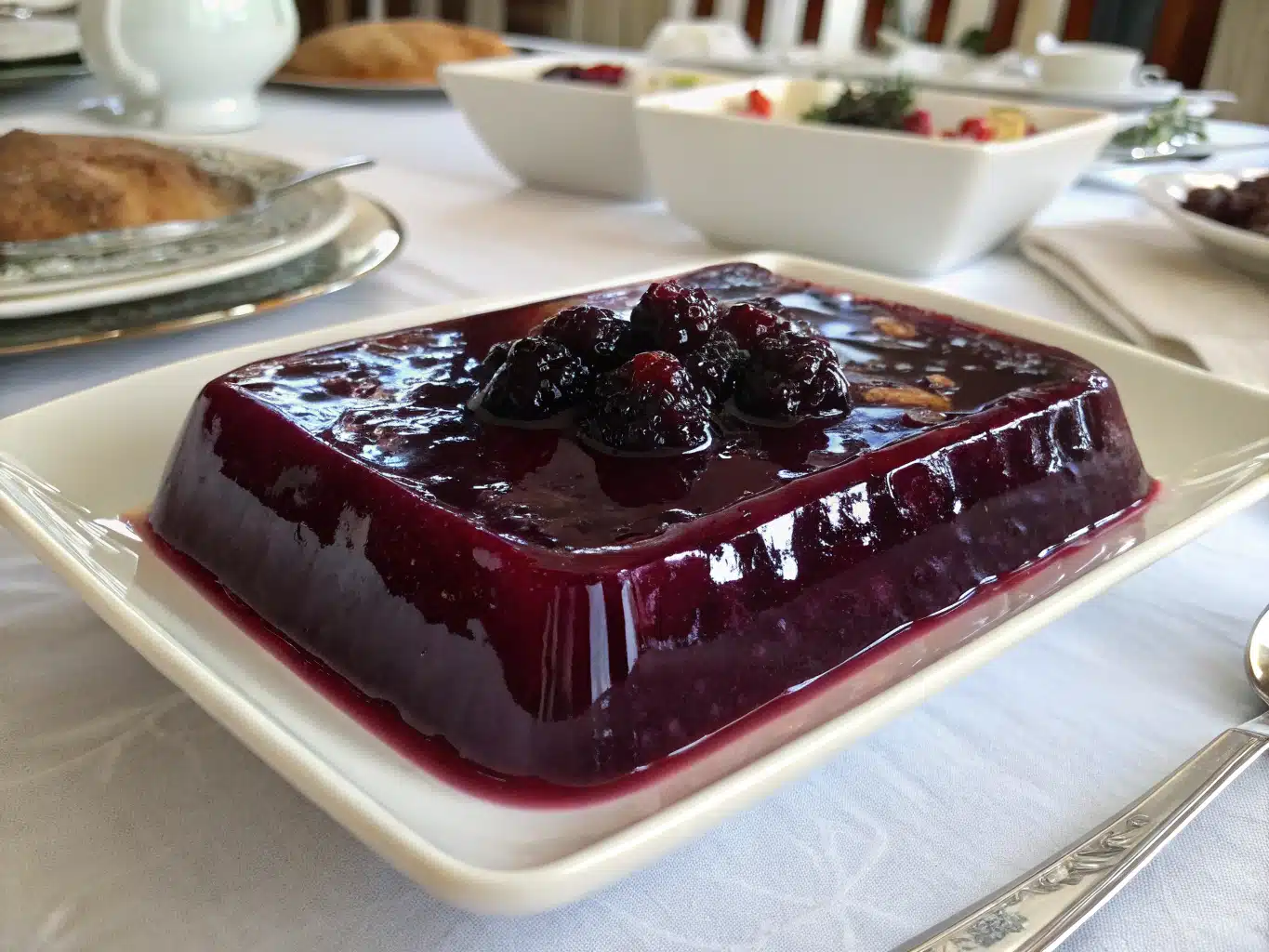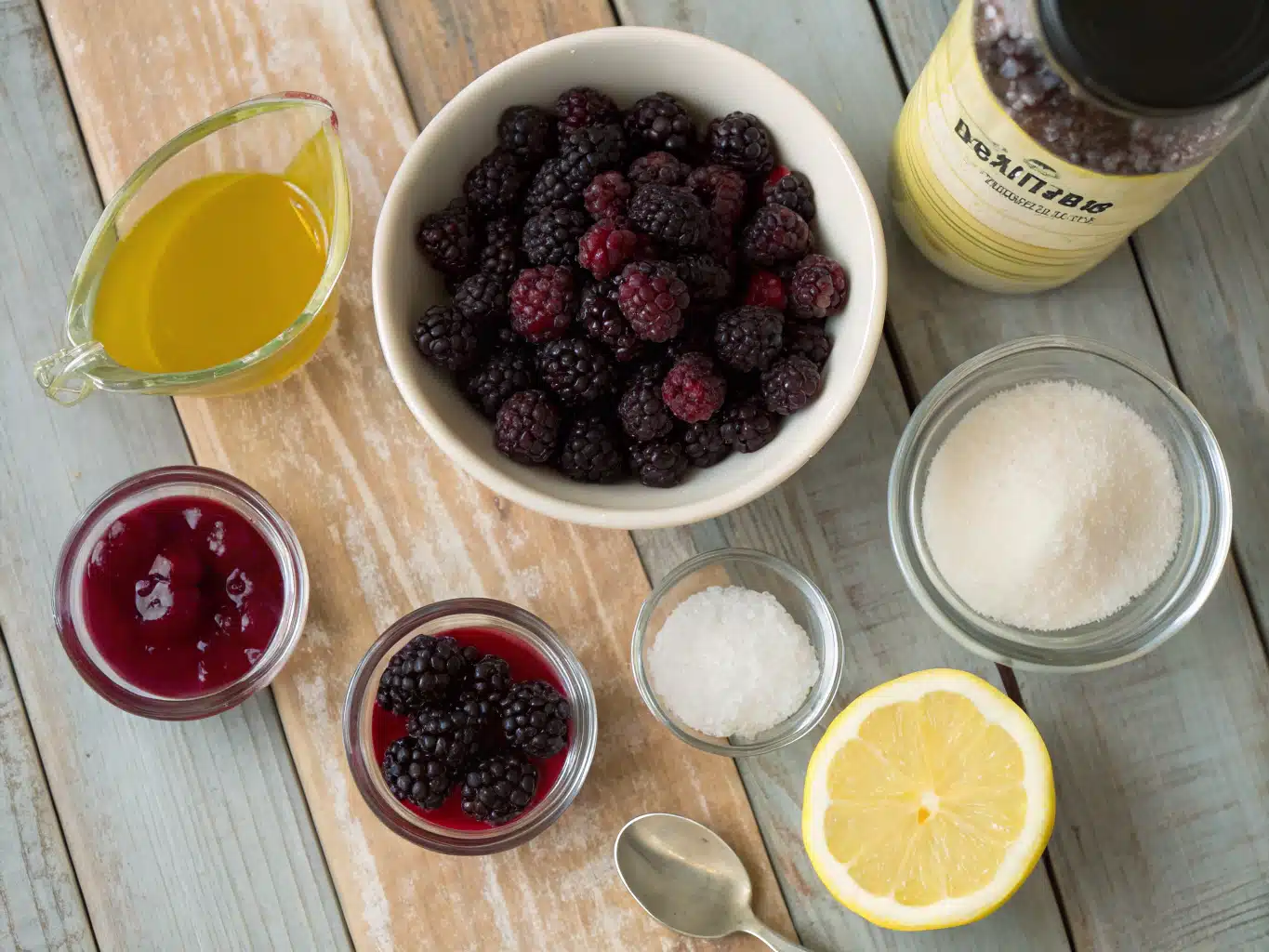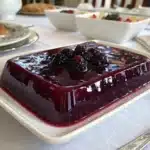
Table of Contents
When I think of summer tucked inside a jar, I think of boysenberry jelly. The first time I made it, I was elbow-deep in stubborn thorns at a local u-pick farm outside of Portland, chasing the legendary sweet-tart flavor that boysenberries promise. There I was, filling buckets with sticky, deep-purple treasure, already dreaming of toast slathered with something rich and jewel-toned come winter.
As a plant-based chef, I’m all about putting seasonal fruits to work in creative, nourishing ways—and nothing quite delivers a burst of flavor like boysenberry jelly. Whether it’s complementing a crunchy peanut butter sandwich or awakening a flaky biscuit at brunch, this jelly has a permanent seat at the table in my kitchen.
In this guide, I’ll show you how to make delicious boysenberry jelly from scratch, cover ingredient options, timing, expert tips, and answer common FAQs. Along the way, you’ll also discover some related resources like boysenberry jam recipes and ways to savor boysenberry pie and more.
Berry Roots: Why Boysenberry Jelly Is Worth the Spoon
A Flavor Rooted in History—and Family
Boysenberry jelly has roots far deeper than a breakfast spread. This California-born hybrid berry—part raspberry, part blackberry, and part loganberry—is both nostalgic and powerfully underrated. I grew up just a few hours from where boysenberries were first cultivated, and every summer, we’d forage blackberries as a family. So when I finally came across a pint of boysenberries at a Portland farmer’s market a decade ago, it was like a childhood memory tapped me on the shoulder.
I remember the first batch I made: the aroma was so intense it felt like my house had turned into a jam factory. That first spoonful—thick, glossy, with just enough tang—confirmed that boysenberry jelly would become an annual tradition.
Being plant-based, it’s also important that the jelly aligns with my lifestyle. No need for gelatin or refined stabilizers; just honest ingredients that make taste buds sing.
What Makes Boysenberry Jelly Special?
Jelly and jam lovers may be familiar with Smucker’s offerings, but there’s something next-level about making boysenberry jelly at home. Boysenberries have a uniquely deep flavor—sweet but complex—with a finish that plays well with anything from oats to tofu cheesecake.
Unlike jam or preserves, jelly uses just the juice—none of the pulp or seeds. This makes it smoother and easier to spread. Plus, it’s shelf-stable and makes the perfect gift.
I’ve also tested different companion recipes, like an indulgent boysenberry cake and refreshing boysenberry ice cream, to build out your boysenberry repertoire.
How to Make Boysenberry Jelly at Home
Ingredients List: Bright, Bold, and Simple

When it comes to jelly, quality ingredients are everything. Here’s what you’ll need:
| Ingredient | Details |
|---|---|
| Fresh Boysenberries | About 4 cups (or swap with thawed frozen boysenberries) |
| Granulated organic cane sugar | 2.5 to 3 cups, depending on your sweetness preference |
| Lemon Juice | 2 tablespoons, fresh squeezed for pectin support |
| Fruit Pectin (no-sugar needed type) | 1 packet or 1.75 oz |
If you don’t have boysenberries on hand, you can use a mix of blackberries and raspberries—aiming for that same sweet-sharp balance.
Timing: Make It in Under Two Hours
This recipe takes just under two hours from berry to jar—perfect for weekend prepping or making ahead as part of a brunch spread.
- Prep Time: 30 minutes (washing, juicing berries)
- Cook Time: 30 minutes (simmering & jarring)
- Cooling/Setting Time: ~60 minutes
- Total Time: Approximately 1 hour, 50 minutes
That means it’s 20% faster than most commercial techniques that require multi-stage filtering or preserving methods.
Step-by-Step Instructions
- Wash your berries thoroughly. If using frozen, let them thaw at room temperature for 1 hour.
- Mash the berries with a potato masher and transfer into a large saucepan.
- Slowly bring to a simmer and let them release juices—about 10–12 minutes.
- Strain the juice using cheesecloth or a jelly bag. Press gently for extra yield but avoid forcing pulp through (for clarity).
- Measure 3½ cups of juice. If needed, adjust with water or additional thawed berries.
- In a large saucepan, combine berry juice and lemon juice. Stir in fruit pectin and bring to a rolling boil.
- Add the sugar all at once, stirring constantly. Boil hard for 1 minute more.
- Skim off foam, then carefully ladle into sterilized jars, leaving ¼-inch headspace.
- Tighten lid bands and process in a boiling water bath for 10 minutes to seal.
Once cooled, the jelly needs 12 to 24 hours to fully set.
Bonus tip: For a unique citrus bite, add a touch of orange zest after the sugar is added.
Curious about the benefits of choosing lower-sugar pectin products and home preservation safety tips? The University of Minnesota Extension — Home Canning Basics offers great tips for safe jarring at home.
Jelly vs. Jam: Know the Difference, Love Both
Comparing Boysenberry Jelly and Jam
People often confuse boysenberry jelly with jam, but the differences are in texture and clarity.
- Jelly uses strained fruit juice—no seeds, no pulp. It’s smooth, glossy, and nearly translucent.
- Jam includes crushed fruit pulp and often seeds, giving it more texture and grit.
- Preserves go one step further with whole or large chunks of fruit.
If you’re all about spreadability and visual finesse—for croissants or thumbprint cookies—jelly is the clean winner. But if you love the feeling of biting into fruit, jam is more your vibe.
When to Choose Jelly Over Jam
Jelly is better in recipes where a silky texture matters. For example, I added it to a vegan cheesecake swirl last Christmas, and it was dreamy. It’s also easier to layer in desserts like boysenberry cobbler, where chunks might interrupt structure.
If you’re planning a trio-of-spreads board, mix textures for variety. I recommend pairing jelly with something creamy (think vegan brie), jam with crusty bread, and preserves with oats or porridge.
Learning how to work with each style makes you a more skilled—and intuitive—plant-based cook.
Storage, Shelf Life, and Tips for Maximum Flavor
How Long Does Boysenberry Jelly Last?
Unopened, homemade boysenberry jelly lasts up to 12 months when stored in a cool, dark pantry. Once opened, refrigerate and use within 3 weeks for premium taste and consistency. To test freshness, look for separation or any off-odors—those are signs it’s time to compost.
If preparing a large batch, label your jars by date and plan usage accordingly—you can use them as gifts or in weekly meal preps.
Pro Tips for Better Jelly Every Time
Want richness and clarity every time? Use a jelly bag and never squeeze the pulp—it clouds the jelly. For a smoother boiling process, use a deep pot and stir clockwise to prevent sticking.
And always sterilize jars. Even though it adds 10 extra minutes, it ensures your hard work lasts.
For adventurous cooking, try swirling boysenberry jelly into overnight oats or brushing it over roasting root vegetables for a tangy glaze.
Frequently Asked Questions
How do you make boysenberry jelly at home?
To make boysenberry jelly, combine fresh or frozen boysenberries, extract the juice, and boil it with lemon juice, pectin, and sugar. Pour the mixture into sterilized jars and seal through water bath canning.
Can I use frozen boysenberries for jelly?
Absolutely. Thawed frozen boysenberries work beautifully and are often more convenient outside of summer months.
What’s the difference between boysenberry jelly and jam?
Jelly is smooth and made using only fruit juice, while jam includes the pulp and seeds, making it thicker and chunkier.
How long does boysenberry jelly last unopened?
Properly sealed and stored, unopened boysenberry jelly can last up to one year in the pantry.
Conclusion
Making boysenberry jelly from scratch is more than a weekend project—it’s a celebration of one of nature’s boldest berries. From its velvety texture to that delightfully tangy finish, this jelly is plant-powered magic in a jar. Whether you spread it thick on warm toast, tuck it into desserts, or dip into it straight from the spoon, the love that goes into homemade jelly beats anything store-bought.
Let your berries shine and turn nature’s bounty into a vegan staple that’s as functional as it is flavorful. For more berry brilliance, check out my go-to boysenberry preserves or whip up a nostalgic boysenberry jam.
Print
Homemade Boysenberry Jelly: A Sweet Vegan Staple
- Total Time: 1 hour 50 minutes
- Yield: 4-5 jars (8 oz each)
Description
When I think of summer tucked inside a jar, I think of boysenberry jelly. This plant-based, jewel-toned delight is the perfect way to preserve one of nature’s boldest berries—sweet, tangy, and versatile enough for toast, desserts, or gifts.
Ingredients
Fresh Boysenberries – About 4 cups (or thawed frozen)
Granulated organic cane sugar – 2.5 to 3 cups
Lemon Juice – 2 tablespoons
Fruit Pectin (no-sugar needed type) – 1 packet or 1.75 oz
Instructions
1. Wash fresh or thawed berries thoroughly.
2. Mash the berries with a potato masher and place in a large saucepan.
3. Simmer for 10–12 minutes to release juices.
4. Strain juice using cheesecloth or jelly bag.
5. Measure 3½ cups of juice. Adjust with water if needed.
6. Combine juice and lemon juice in a saucepan. Add pectin and bring to boil.
7. Add sugar all at once. Boil hard for 1 minute while stirring.
8. Skim foam and ladle into sterilized jars with ¼-inch headspace.
9. Seal jars and process in boiling water bath for 10 minutes.
10. Let jars cool and set for 12–24 hours before using.
Notes
Use a jelly bag and avoid squeezing to maintain clarity.
Frozen boysenberries work well if fresh are unavailable.
Add orange zest for a citrus twist.
Label jars with dates for storage and gifting.
Refrigerate after opening and consume within 3 weeks.
- Prep Time: 30 minutes
- Cook Time: 30 minutes
- Category: Preserves
- Method: Boiling
- Cuisine: American
Nutrition
- Serving Size: 1 tbsp
- Calories: 45
- Sugar: 10g
- Sodium: 0mg
- Fat: 0g
- Saturated Fat: 0g
- Unsaturated Fat: 0g
- Trans Fat: 0g
- Carbohydrates: 11g
- Fiber: 0g
- Protein: 0g
- Cholesterol: 0mg
Keywords: boysenberry jelly, homemade jelly, vegan preserves
